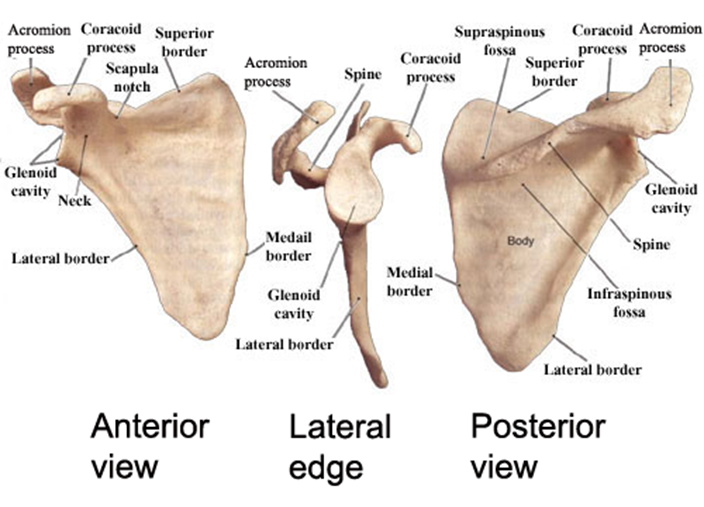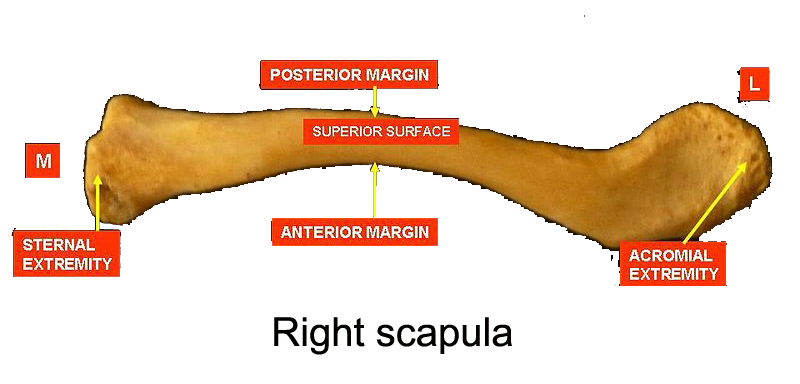6.1: The Pectoral girdles
- Page ID
- 59389
There is a pectoral girdle above each arm, consisting of the scapula (shoulder blade) and clavicle (collar bone.)

Figure \(\PageIndex{1}\): The pectoral girdle. The scapulae are in green and the clavicles are in blue.. (CC-BY-SA, Wikimedia, BodyParts3D/Anatomography)
The scapula has a triangular body with three main processes coming off the body. On the posterior side is the spine of the scapula that ends in the acromion process, which articulates with the lateral end of the scapula. On the anterior side, facing into the body, is a right-angled process called the coracoid process. While at the superior lateral edge of the scapula the glenoid cavity, which serves as the socket for the head of the humerus bone. The glenoid cavity always points laterally, while the spine and acromion are posterior. This will help you determine whether a particular scapula comes from the anatomical left or right.

The clavicle is a vaguely S-shaped bone which articulates with the scapula in the lateral and articulates with the sternum at the medial end. The flatter broader end is the acromial extremity (end), which articulates with the acromion process of the scapula. The superior surface of the acromial extremity is smoother than its inferior surface, which can help you determine whether a particular clavicle bone comes from the left or right. The more circular end is the sternal extremity (end), which articulates with the manubrium of the sternum.

LAB 6 EXERCISE \(\PageIndex{1}\)
- Using one of the full skeletons in the room, fill out the table below with three or four steps to determine whether an individual scapula comes from the anatomical left or anatomical right. You must use any features that are already filled in. The clavicle was done as an example.
- You can describe any features on that bone and which direction it has to face to allow you to determine whether that particular bone came from anatomical left or anatomical right.
- Sample instructions for the clavicle are provided as an example for all subsequent exercises. Use proper anatomical terminology. Use terms which will make sense to anyone schooled in anatomy if they read it. Use as many steps as you need, not necessarily four.
Clavicle – Anatomical left from anatomical right
- Put the smooth side of the acromial end facing superiorly.
- Put the curve in the middle of the bone facing anteriorly.
- If the acromial end is on the right, the clavicle is from the anatomical right.
- If the acromial end is on the left, the clavicle is from the anatomical left
Scapula – Fill in four steps to determine anatomical left from anatomical right
1. Glenoid cavity -
2.
3.
4.

